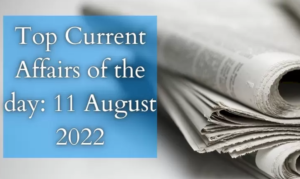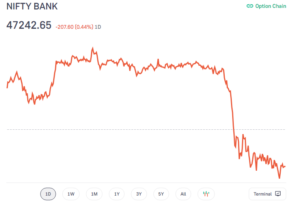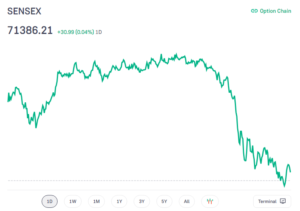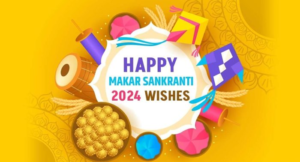
Haryana launched ‘Vehicle Movement Tracking System’ mobile app
Haryana Chief Minister Manohar Lal Khattar has launched a Vehicle Movement Tracking System (VMTS) mobile app to track the vehicles carrying sand and other mining material. The app will be used at different checkpoints in all the districts of Haryana. All vehicle details including vehicle type, vehicle number, moving from, moving to, and driver details will be stored in it. The non-registered individual will not be permitted to enter the zone of sand mining. This App has been designed and developed in-house by National Informatics Centre, Haryana.
About the app:
The app will be used at different checkpoints in all the districts of Haryana and vehicle details —like vehicle number, vehicle type, moving from, moving to — along with driver details, like name, driver mobile number and driver license number will be punched into it. If the vehicle is to move between source and destination checkpoints, then officials can mark the vehicle exit from the originating check post as an interim exit and at the destination checkpoint it will be marked as a final exit.
SC appointed panel for the recovery of money from NSEL defaulters
The Supreme Court of India formed a high-level committee, headed by retired Bombay High Court Judge Pradeep Nandrajog, for recovery of money from the defaulters against whom the National Spot Exchange (NSEL) has secured money decrees. NSEL has already secured decrees and arbitration awards of Rs 3,534 crores against the defaulters. Further, defaulters’ liabilities of Rs 760 crores have already been crystallised by the committee appointed by the Bombay High Court.
Proceedings for a decree against NK Protein worth Rs 964 crores is pending before the Bombay High Court. In 2013, investors and traders in NSEL lost about Rs 5,600 crores after the exchange shut trading abruptly leading to a series of defaults. Two of the defaulters have already paid their liabilities worth Rs 196 crores. The claims will be verified by the Supreme Court-appointed committee. The Supreme Court-appointed committee will oversee the sale of assets, attached by the Maharashtra government under the MPID Act and Enforcement Directorate across India.
Ministry of Skill Development signs MoU with ISRO to begin its Training Program
The Ministry of Skill Development and Entrepreneurship (MSDE) signs an MoU (Memorandum of Understanding) with the Indian Space Research Organisation with the goal of upskilling the technical workforce at the Department of Space of ISRO. Shri Rajesh Aggarwal, Secretary MSDE, and Shri S. Somanath, Secretary Department of Space/ Chairman ISRO, signed the MoU.
KEY POINTS:
- The initiative aims to establish a formal framework for short-term courses to provide training for the skill development and capacity building of ISRO technical professionals in the space domain in the country, in accordance with industry requirements. Over the next five years, more than 4000 ISRO technical professionals will be taught in the programme.
- The training will take place at MSDE’s National Skill Training Institutes (NSTIs) throughout India.
- The training program’s goal is to improve the abilities of diverse technical professionals in ISRO centres and units under the Department of Space (DOS).
- The programme will provide training in certain disciplines to enhance employees’ skill sets in accordance with the latest industry trends and requirements, with the support of MSDE and its state-of-the-art training institutes around the country.
- Under the terms of the MoU, ISRO will collaborate with MSDE and the accompanying NSTI to develop a thorough training calendar, curriculum, and syllabus to meet the program’s larger goals. The trainees will receive trainee kits from ISRO.
Important Takeaways For All Competitive Exams:
- Union Minister of Skill Development & Entrepreneurship: Dr Mahendra Nath Pandey
- Secretary Department of Space/ Indian Space Research Organisation (ISRO) Chairman: Shri S. Somanath
Air Marshal Sanjeev Kapoor Takes Charge as DG (Inspection and Safety)
Air Marshal Sanjeev Kapoor has assumed the appointment of Director General (Inspection and Safety) of Indian Air Force at Air HQ New Delhi. The Air Marshal is a graduate of the National Defence Academy and was commissioned in the Flying branch of IAF in December 1985 as a Transport Pilot.
Sanjeev Kapoor is an alumnus of Defence Services Staff College (DSSC) Wellington, College of Defence Management and National Defence College. The Air Officer is a Qualified Flying Instructor with more than 7700 hours of flying experience on various aircraft in the inventory of IAF. The Air Officer is a recipient of Vayu Sena Medal and Ati Vishist Seva Medal. In a service career spanning over 36 years, the Air Marshal has tenanted important command and staff appointments.
PM-Kisan 3rd Anniversary, transferred Rs 1.80 lakh to farmers accounts directly
About 11.78 crore farmers as of February 22, 2022, have been benefitted under the PM Kisan scheme. The amount worth Rs1.82 lakh crore have been disbursed to eligible beneficiaries across India in various intervals. During the current Covid 19 epidemic period, Rs. 1.29 lakh crore has been released.
Self-registration Mechanism:
It is the process of self-registration of beneficiaries that has been simplified and made easier through mobile app, PM KISAN portal and walk-ins via Common Service Centers to provide maximum benefit to the farmers.
Enhanced Recovery Mechanism:
In this the recovery process has been made very simple and transparent, with the state not having to submit a Demand Draft or a physical check, in the case of ineligible beneficiaries. The method comprises an automatic transfer beginning with a state nodal department’s account to a central government account, making it incredibly efficient and time-saving.
Grievance Redressal & Helpdesk:
A holistic grievance redressal mechanism has been anticipated to address the issues and problems faced by the beneficiaries, which includes the establishment of a central Project Management Unit of PM KisanSammanNidhiYojana at the Centre which is responsible for the all-inclusive coordination to streamline the processes between all the stakeholders. In order to support the beneficiaries regarding any issues faced at the time of the registration process or any related query, a centralised helpdesk has also been incorporated. About 11.34 lakh farmer problems were received through this initiative, with the respective state authorities addressing more than 10.92 lakh of them.
Physical Verification Module:
According to the scheme’s guidelines, a mandated physical verification of 5% of beneficiaries is conducted every year to ensure the scheme’s legitimacy and legality. The selection of beneficiaries for physical verification has been completely automated with the aid of the Physical Verification Module, and no manual intervention is needed. After the payments for the last trimester on May 14, 2021, a new module has been implemented for the validation of 10% of the recipients.
About the PM Kisan scheme:
PM-KISAN is a centre sectored scheme which was launched on 24th February 2019 to substitute monetary needs of landholding farmers. The monetary benefit of Rs 6000/- per year in three equal instalments, every four-month, 3 times a year, it is transferred into the bank accounts of the families of the farmers across the country through Direct Benefit Transfer or DBT mode. The scheme was in the starting meant for small and marginal farmers having landholding upto 2 hectares but then the scope of the scheme was extended to cover all landholding farmers with effect from 01.06.2019.
India embarks on the ‘World’s Largest’ Film Restoration Project
Information and Broadcasting Minister, Anurag Thakur said that an amount of Rs 363 crore has been allotted for the world’s largest film restoration project under the National Film Heritage Mission. The mission was launched in 2016 with an outlay of 597 crore rupees. It aims at preserving, restoring and digitizing the cinematic heritage.
The Minister informed that the process of restoring over 5900 short films, documentaries and features is underway. He said this exercise carried out by the National Film Archive of India proves to be one of the world’s biggest restoration, conservation, preservation and digitization process undertaken. The Minister also held a meeting to review the functioning of the Film and Television Institute of India, FTII and deliberated on the vision of taking FTII to international standards of excellence. Mr Thakur said FTII should nurture entrepreneurial skills and equip students to launch startups in film and television productions.
NCRTC to receive India’s first Regional Rapid Transit System train set at Salvi
At Alstom’s Savli project in Gujarat, the National Capital Region Transport Corporation (NCRTC) will receive India’s first semi-high-speed train set for Regional Rapid Transit System (RRTS). Manoj Joshi, Secretary, Ministry of Housing and Urban Affairs, will be present at the occasion.
KEY POINTS:
- The RRTS train sets are produced under the Make in India initiative and can reach a top speed of 180 kilometres per hour. The train will be transported to Duhai Depot in Uttar Pradesh, where it will be repaired and operated.
- Cushioned seating, laptop-mobile charging, luggage racks, and a dynamic route-map are among the modern commuter-centric features of the completely air-conditioned train.
- The NCRTC is in charge of putting India’s first RRTS corridor between Delhi and Meerut into action. The 82-kilometer-long route is now under construction.
- The 17-kilometer priority segment between Sahibabad and Duhai is expected to be operational by 2023, with the entire corridor completed by 2025.
Important Takeaways For All Competitive Exams:
- Secretary, Ministry of Housing and Urban Affairs: Shri Manoj Joshi
- Minister of Housing and Urban Affairs: Shri Hardeep Singh Puri
Sudarshan Venu has been named the Managing Director of TVS Motor Company
Sudarshan Venu was named Managing Director of TVS Motor Company at its board meeting. TVS Motor Company is a well-known global manufacturer of two-wheelers and three-wheelers. Sudarshan has shaped the destiny of one of India’s major two-wheeler manufacturers, making it the most award-winning two-wheeler company. He was instrumental in the company’s expansion in India and other significant overseas areas, such as Asia, Africa, and, more recently, Europe.
KEY POINTS:
- Sudarshan Venu, according to TVS Motor Company, has been instrumental in the company’s success in India as well as significant overseas markets such as Asia, Africa, and, more recently, Europe.
- Sudarshan’s outstanding efforts have seen critical decisions to produce aspirational products and grow quickly in India and beyond, according to Mr Venu Srinivasan, Chairman Emeritus, TVS Motor Company.
- He has also overseen some significant acquisitions and group company expansion.
- Sudarshan has a clear vision, according to Prof Sir Ralf Dieter Speth, Chairman of TVS Motor Company, and he brings with him a remarkable passion for modern technology and long-term growth based on values. He thinks ahead of the curve, anticipating emerging trends. Two of his main areas of concentration are personal and smart mobility, as well as electrification. He has also been instrumental in TVS Motor’s foreign expansion.
- He has the capacity to lead high-performing foreign teams while maintaining empathy. He is concerned about people and society.
About TVS Motor Company:
TVS Motor Company is a well-known two- and three-wheeler company with a commitment to sustainability and advancement via mobility. They are the only two-wheeler manufacturer to win the coveted Deming Prize.
Important Takeaways For All Competitive Exams:
- Chairman, TVS Motor Company: Prof Sir Ralf Dieter Speth
- Chairman Emeritus, TVS Motor Company: Mr Venu Srinivasan
Asian Games 2022 in China postponed to 2023
The Asian Games 2022, due to be held in Hangzhou, China in September, has been postponed to 2023 due to rising COVID-19 cases in the country, the Olympic Council of Asia (OCA) announced. The Olympic Council of Asia, the governing body for the Asian Games, said it will announce the new dates for the 19th edition of the Games. The Asian Games 2022 were originally scheduled from September 10 to 25.
The host city of Hangzhou is less than 200km away from Shanghai, which is currently fighting another major COVID-19 outbreak and has strict restrictions in place, including a weeks-long lockdown. The OCA also announced that the third edition of the Asian Youth Games, scheduled to be held in Shantou in December, have been cancelled. The World University Games 2021, to be held from June 26 to July 27 in Chengdu this year, have also been pushed to 2023.
List of Important Battles and wars in Indian History
List of Important Battles and wars in India
In the history of India, there are several notable battles, starting from ancient times to modern times. These battles and wars have influenced India and led to many changes throughout these years. Here is a list of some important battles and wars in India.
Battle of the Ten Kings or Dasarajna Yuddha
Battle of the ten kings is mentioned in the Rig Vedas. This battle is older than the Ramayana. King Sudas was the 16th generation of Emperor Bharata. The battle of the ten kings was fought between the Vedic kingdoms of Bharatas and Trtsu-Bharata Sudas in the 14th Century BCE. The battle took place near River Ravi (Parushni River) in Punjab. The battle leads to the victory of Trtsu-Bharatas.
Battle of the Hydaspes
The Battle of the Hydaspes took place near the river banks of Hydaspes, now known as the Jhelum River in Punjab of Pakistan. The battle was fought between Alexander the Great and the King Porus, in 326 BCE. Alexander defeated Achaemenid Empire’s forces and set his campaign to extend his empire in India. Alexander the Great won the battle of Hydaspes.
Seleucid-Mauryan War
The Seleucid-Mauryan war was fought between Chandragupta Maurya and Seleucus I Nicator. The battle was fought in 305 and 303 BCE. The battle started in 305 BCE when Chandragupta tried to retake the Indian Satrapies by leading a series of Campaigns. Seleucus I Nicator fought against Chandragupta to defend his territories but later, the two sides made peace in 303 BCE, and the outcome of the battle was Chandragupta was allowed to control the areas left by Alexander the Great when he returned to the west.
Battle of Pullalur
The battle of Pullalur was fought between Chalukya King Pulakesin II and Pallava King Mahendravarman. The rapid expansion of the Chalukya Empire resulted in the seizure of the Vishnukundin Kingdom. The Vishnukundin Kingdom was the property of Pallavas of Kanchi, an emerging power in the 6th century AD. This resulted in the anger of Pallavas and led to the Battle of Pullalur. The Chalukya King Pulakesin won the battle, and the war took place between 618-619 CE.
First Battle of Tarain
The first battle of Tarain between Mohammed Ghori (leader of the Turkish Clan) and Prithviraj Chauhan (Leader of the Rajput Clan) was in 1191. By 1149, Ghurids emerged victoriously and manage to sack the city of Ghazni. The Ghurids Empire was led by Mohammed Ghori and Ghiyas al-Din. They wanted to expand their empire in the eastern part of India. Mohammed Gori sent a notice to the court of Prithviraj Chauhan for settlement. The settlement included some conditions. This condition said that all the citizens have to convert to Islam and accept the Suzerainty of Ghurids, all these conditions work refused by Prithviraj Chauhan. This led to the first battle of Tarain and was one of the major battles during the Arab and Turkish invasion of India. Mohammad Ghauri entered the kingdom of Chalukyas in 1178 but was defeated by the Chalukyas army. The battle of Tarain was won by Prithviraj Chauhan.
The second battle of Tarain
The second battle of Tarain was fought between Muhammad Ghori and Chahamana King Prithviraj Chauhan. Prithviraj had defeated the Ghurids at the first battle of Tarain in 1191. The second battle of Tarain occurred in the same field as the first one. The second battle of Tarain was a victory for Muhammad Ghori in the year 1192 in Taraori, Haryana.
First Battle of Panipat
The first battle of Panipat was between Babur and the Lodi Kingdom on 21st April 1526. Babar wanted to conquer India after he reach the banks of Chenab in 1519. Babur wanted to expand his empire in Punjab to fulfill his ancestor Timur’s legacy. During this time North India was ruled by Ibrahim Lodi. The Mughal army consisted of 13000 to 15000 men. The battle of Panipat was a victory for Babur.
Battle of Chausa
The battle of Chausa was fought between Mughal emperor Humayun and Sher Shah Suri in 1539. The battle was fought on 26th June at Chausa which is now Bihar. The battle of Chausa was a notable military engagement between the Mughal emperor Humayun and the Afghan Sher Shah Suri. The Mughal emperor Humayun lost in the battle of Chausa and Sher Shah Suri crowned himself Farid al-Din Sher shah.
Second Battle of Panipat
The second battle of Panipat was fought between Akbar and Hem Chandra Vikramaditya in the year 1556 on 5th November. Hem Chandra Vikramaditya himself attack the Mughals and was losing the battle. He was seriously injured in the battle and was captured by the Mughals. Bairam Khan asked Akbar to behead Hem Chandra but he refused to touch Hem Chandra’s head with his sword. Bairam Khan himself beheaded Hem Chandra’s head and send it to Kabul to hang it outside the Delhi Darwaja. This led to the victory of the Mughals in the second battle of Panipat.
Third battle of Panipat
The third battle of Panipat was fought between the Maratha Empire and the Durrani Afghan Empire in 1761 on 14th January. The third battle of Panipat was a victory for Ahmed Shah Abdali who was the leader of the Afghan force. The Maratha leaders Vishwa Rao and Sadashivrao were shot dead on the battlefield.
FAQs related to Battles and Wars in India
1. What are the important battles in Indian history?
Ans. Some of the important battles and wars in the history of India are the Battle of Panipat, Battle of Tarain, Battle of Chausa, and many more.
2. How did the wars and battles influence India’s culture?
Ans. The wars and battles lead to many changes in the culture of India, which led to the change in the names of the states, the partition of the countries, and changes in kings and powers.
BRO celebrates its 62nd raising day on 7th May
The Border Roads Organisation (BRO) was founded on 7th May 1960 as a leading road construction agency under the Ministry of Defence with Shramena Sarvam Sadhyam (everything is achievable through hard work) as its motto. On 7 May 2022 BRO celebrated its 62nd Raising Day (foundation day).
About BRO
- It is a leading road construction agency under the Ministry of Defence.
- Its primary role is to provide road connectivity in India’s border areas. It also creates upgrades and maintains infrastructure along borders to meet India’s overall tactical and strategic goals.
- Apart from road construction it also executes maintenance works along Northern and Western frontiers mainly to meet the strategic requirements of the Indian Army. It is responsible for over 53,000 Km of roads.
- Its work involves Formation Cutting, Surfacing, Bridge construction and Resurfacing.
- It contributes toward India’s strategic objectives in neighbouring regions by constructing roads in friendly foreign nations like Afghanistan, Bhutan, Myanmar, Sri Lanka and Nepal.
- Disaster management: It has played important role in reconstruction work after the tsunami in Tamil Nadu in 2004, the Kashmir earthquake in 2005, the Ladakh flash floods in 2010 etc.
Important takeaways for all competitive exams:
- Border Roads Organisation Headquarters: New Delhi;
- Border Roads Organisation Director-General: Lt. Gen. Rajeev Chaudhary;
- Border Roads Organisation Founded: 7 May 1960.
Prime Minister Modi addresses the JITO Connect 2022 launching session
Prime Minister Shri Narendra Modi used video conferencing to address the opening session of the Jain International Trade Organisation’s JITO Connect 2022. In his remarks, the Prime Minister referred to the spirit of Sabka Prayas in the topic of the programme, saying that the world is looking at India’s development resolutions as a method of attaining its objectives. Whether it’s for global peace, worldwide wealth, solutions to global difficulties, or the development of the global supply chain, the world looks to India with hope.
KEY POINTS:
- The Prime Minister stated that whatever the people’s areas of expertise, concerns, or differences of opinion may be, they are all unified by the rise of New India.
- Everyone nowadays believes that India has progressed beyond probability and potential and is now serving a larger purpose of world welfare.
- He added that the country is encouraging talent, trade, and technologies as much as possible, reiterating his earlier declaration of pure goals, clear intentions, and favourable policies.
About EARTH
- The Prime Minister exhorted everyone in attendance to work for EARTH.
- E stands for environmental prosperity. PM also encouraged them to talk on how they can help build at least 75 Amrit Sarovars in each district by August 15 of next year.
- A stands for increasing investment in natural farming, farming technology, and the food processing sector in order to make agriculture more profitable.
- Working for Reuse, Reduce, and Recycle, the letter R stands for Recycling and the circular economy.
- The letter T stands for bringing technology to as many people as possible. PM challenged the audience to examine how other advanced technology, such as drone technology, may be made more accessible.
- H stands for healthcare, and that the government is now working hard to improve healthcare and medical colleges in every area across the country.
JITO Connect 2022
The prestigious JITO Connect 2022 – One of the World’s Largest and Most Desired Global Summits, a 3-day power packed Summit that is set to take people on a journey to Unravel the Future and embrace Change, the only constant, is set to take people on a journey to Unravel the Future and embrace Change, the only constant It will provide unsaid stories, thoughts, and discoveries that will encourage everyone to grasp other perspectives and see the big picture.
Rabindranath Tagore Jayanti celebrated across the world
Rabindranath Tagore Jayanti 2022
Rabindranath Tagore Jayanti is celebrated on 7th of May as a cultural event throughout the nation in the remembrance of Rabindranath Tagore’s birth anniversary. According to the Bengali calendar, it is celebrated on the 25th day of boishakh, which is early May in the Gregorian Calendar. The people who love Tagore and his works are called Tagorephiles. These are the people who love the work of Tagore and celebrate him for his poetries and literature. The birth anniversary of Tagore is like a festival for them.
It is a huge festival for Bengali and Rabindranath Tagore Jayanti is celebrated in every college, university, and school by organizing different cultural activities. At Shantiniketan in West Bengal, Tagore’s birth anniversary is celebrated on a large scale and chiefly in the Visva Bharti University where Tagore himself founded the institute for cultural, social, and educational development of the society. The Government of India issued 5 Rupees coins to mark the 150th birth anniversary of Rabindranath Tagore in 2011.
Rabindranath Tagore: History
Tagore was born on 7th May 1861 in Jorasanko Mansion in Kolkata. His father was Devendra Nath Tagore and his mother was Sharda Devi. He belongs to a Brahmin family and he was the youngest one in the family. Since childhood, he was interested in literature and desired to learn new things. He received the first Nobel prize in India in 1913 for his literary work. Tagore has written several poems songs and literary works including the national anthem, Jana Gana Mana. When he was the age of 8 he started writing and merging into literature. At the age of 16, he released his first poetry collection under the name of “Bhanushima”.
Tagore’s mother died early in his childhood and his father was busy traveling due to his work. He was mostly raised by the servants. His father regularly invited the professional musician to teach his children classical music. In 1901 Tagore moved to Shantiniketan to found an ashram with a marble floor prayer hall, an experimental school, plant trees, a library, and a garden. His father died in 1905 and before that his wife and two children also died. In 1912, he translated Gitanjali which was written in 1910 into English. During his trip to London, he shared all these poems with his admirers which included William Butler Yeats and Ezra Pound. London’s Indian society published the work in a limited edition and a section of Gitanjali was published in an American magazine called the poetry.
Rabindranath Tagore: Literary works
The famous poems and literary works of Tagore are-
- Manasi 1890 (The ideal one)
- Sonar Tari 1894 (The golden boat)
- Gitanjali 1910 (Song offerings)
- Gitimalya 1914 (Wreath of songs)
- Balaka 1916 (The Fighter of Cranes)
Major places written by Tagore are-
- Raja 1910 ( The King of the Dark Chamber)
- Dakgarh 1912 (The post office)
- Achalayatan 1912 (The immovable)
- Muktadhara 1922 ( The waterfalls)
- Raktakaravi 1926 (Red Oleanders)
Short stories and novels-
- Gora,1910
- Ghare-Baire (The home and the World)
- Yogayog, 1929 (Crosscurrents)
Foundation of Visva Bharati
Visva Bharti was founded by Rabindranath Tagore in 1918, it was inaugurated 3 years later. The institution adopted the brahmachari system in the school and the gurus used it to guide their students spiritually and intellectually. Tagore was against the classroom studies so the teaching was done under trees. The Nobel prize money was donated to Shantiniketan by Rabindranath Tagore. He used to teach the students and wrote the textbooks for them. He aimed to make Shantiniketan as a connecting bridge between India and the world and make it a center for the study of humanity. He also fundraised for Visva Bharti school in Europe and USA.
Foundation of Shriniketan
In 1921 Shriniketan was established by Tagore and agricultural economist Leonard Elmhurst in the sural village. With this institute, Tagore strengthens the Swaraj protest by Gandhi against the British. He lectures about caste discrimination and untouchability he also opened a temple for the Dalit Guruvayoor temple.
Rabindranath Tagore- Awards
- In 1913 he got the Nobel prize for literature
- In 1915 he got knighthood honor by King George V but he renounced the award after the Jallianwala Bagh massacre in 1990.
FAQs related to Rabindranath Tagore Jayanti
1. Why do we celebrate Rabindranath Tagore Jayanti?
Ans. Rabindranath Tagore Jayanti is celebrated to facilitate Rabindranath Tagore’s birth anniversary. It is celebrated annually as a cultural event.
2. When is Rabindranath Tagore Jayanti 2022?
Ans. Rabindranath Tagore Jayanti in 2022 is on 7th May. Rabindranath Tagore Jayanti is celebrated every year as a cultural event in the whole nation.
List of State-wise Indian Folk Dances 2022
Indian Folk dances State-wise
Dance is an art form that is different for everyone. It is not only about moments it is about the feelings and emotions we express through dance. In a diverse country like India, there are more languages than in States. If we talk about dance forms in India there are more than 100 dance forms in India. Every state and every region has a different form of dance and music.
There are 9 major dance forms of India which accepted by the Indian ministry of culture and according to the Sangeet Natak Academy, there are 8 dance forms in India. Other than these several other dance forms are not known at the national level. Here in the article, we will discuss several dance forms of each state in India.
List of Dance forms in India
| State | Major Dance Form |
| Andhra Pradesh |
|
| Arunachal Pradesh |
|
| Assam |
|
| Bihar |
|
| Chhattisgarh |
|
| Goa |
|
| Gujarat |
|
| Haryana |
|
| Himachal Pradesh |
|
| Jharkhand |
|
| Karnataka |
|
| Kerala |
|
| Madhya Pradesh |
|
| Maharashtra |
|
| Manipur |
|
| Meghalaya |
|
| Mizoram |
|
| Nagaland |
|
| Odisha |
|
| Punjab |
|
| Rajasthan |
|
| Sikkim |
|
| Tamil Nadu |
|
| Telangana |
|
| Tripura |
|
| Uttar Pradesh |
|
| Uttarakhand |
|
| West Bengal |
|
Major Dance Forms in India
- Bharatnatyam- Originated from Tamil Nadu. It was originally performed in the temples. Bharatnatyam is 2000 years old dance form and it can also be found in the Bharata Muni’s Natya Shastra.
- Kathak- The origin of Kathak is Uttar Pradesh. The and the word Kathak is derived from the word Katha which means story. It is considered a musical dance story because throughout the whole performance the artists narrate stories.
- Kathakali- Kathakali originated from Kerala. Includes storytelling with the help of dance.
- Kuchipudi- Originated from Andhra Pradesh. Kuchipudi is developed to worship the Lord, Krishna.
- Manipuri- Originated from Manipur. Lai Haraoba is the origin and basis of all the dance forms of Manipuri dances.
- Mohiniyattam- It originated from Kerala. The name Mohiniyattam is derived from the word Mohini, which is the feminine form of Lord Vishnu. The word Mohini means the dance of Mohini.
- Odissi- It originated from Odisha. The costume used in Odissi is a silk saree.
- Sattriya- Originated in Assam. It was innovated by the great Vaishnava saints and the reformers of Assam.
- Chhau- Chhau is performed in Purulia, West Bengal, Seraikella, Jharkhand, and Mayurbhanj Chau of Odisha. It is a semi-classical dance form.
FAQs related to Dance forms in India
1. How many dance forms are there in India?
Ans. There are 29 states and all of these 29 states have more than 10 dances each. If you talk about the undiscover dance forms there will be several dance forms in India.
2. Does the union territories of India also have dance forms?
Ans. All the union territories have different dance forms, for example under one and Nicobar Islands have Nicobari as a dance form.
UP villages to get free high-speed internet connectivity
Uttar Pradesh government will provide free wi-fi facilities at more than 58 thousand places in the villages of the state. This internet facility will be available for the people within 50 meters of the Gram Sachivalaya (village secretariat) building which is being built in every Gram Panchayat of the state.
In order to make every village a smart village, high-speed internet connectivity will be provided to the village secretariats and a free high-speed Wi-Fi internet facility will be provided to the villagers within a radius of 50 meters of the village secretariat building. The process of establishment of village secretariats in 58,189-gram panchayats of the state is going on continuously.
The government informed that the Gram Panchayat office was being established in the name of ‘Gram Sachivalaya’. Arrangements are also being made to ensure that all the documents/records/documents required by the villagers can be obtained through Panchayat Assistant/Common Service Center (CSC) in the village secretariat.
Important takeaways for all competitive exams:
- Uttar Pradesh Capital: Lucknow;
- Uttar Pradesh Chief Minister: Yogi Adityanath;
- Uttar Pradesh Governor: Anandiben Patel.
World Red Cross Day 2022 observed on 8th May
World Red Cross Day is observed globally on 8th May every year. The day aims to broaden the public’s understanding of the International Red Cross and Red Crescent Movement. Red Crescent Societies are affiliated and work in cooperation with the World Red Cross to assist in the activities of the movement. National Red Crescent societies and Red Cross Societies are found in almost every nation worldwide.
The theme of World Red Cross Day 2022:
The theme of World Red Cross Day 2022 is #BeHUMANKIND (Believe in the power of Kindness). The theme of World Red Cross Day 2022 focuses on the power of kindness and how it can impact the whole world.
Red Crescent Movement:
The International Red Cross and Red Crescent Movement is a humanitarian movement with approximately 97 million volunteers, members and staff worldwide, which was founded to protect human life and health, to ensure respect for all human beings, and to prevent and alleviate human suffering.
History of the World Red Cross Day:
Henry Dunant was born on 8th May, 1828 and also was the winner of the Nobel Peace Prize. World Red Cross Day is also known as World Red Cross and Red Crescent Day. In 1863, Henry Dunant established the Red Cross Committee International in Geneva, Switzerland.
In 1934, the principles of the Red Cross Truce were presented at the 15th International Conference. It was approved at the same conference. World Red Cross Day is annually celebrated on May 8, 1948. In 1984 it was named as World Red Cross and Red Crescent Day.
Important takeaways for all competitive exams:
- International Committee of the Red Cross Headquarters: Geneva, Switzerland;
- International Committee of the Red Cross Founder: Henry Dunant;
- International Committee of the Red Cross Founded: 17 February 1863, Geneva, Switzerland;
- International Committee of the Red Cross President: Peter Maurer.
India logs 6.2 percent increase in death rate as per CRS during 2020
The Civil Registration System (CRS) report 2020, based on birth and death reports, has been released by the central government. According to the data, the number of registered births declined from 2.48 crore in 2019 to 2.42 crore in 2020, representing a 2.40 percent decrease. According to the Vital Statistics of India based on the Civil Registration System’s report for 2020, the number of registered deaths increased by 6.2 percent from 76.4 lakh in 2019 to 81.2 lakh in 2020.
Key Points:
- Males account for 60.2 percent of all registered deaths, while females account for 39.8 percent.
- Maharashtra, Bihar, Gujarat, West Bengal, Andhra Pradesh, Tamil Nadu, Karnataka, Madhya Pradesh, Rajasthan, Assam, and Haryana are among the states and union territories that have contributed considerably to the increase in deaths from 2019 to 2020.
- The number of births and deaths included in the study are factual figures collected from roughly 3 lakh registration units across the country, according to NITI Aayog Member(Health) Dr. V K Paul.
- CRS is a system for recording births, deaths, and stillbirths that is universal, continuous, mandatory, and permanent.
- The Registration of Birth and Death Act (RBD) of 1969 governs the registration of births and deaths.
- COVID-19 and other causes of death are included in these numbers.
Time of Remembrance and Reconciliation for Those Who Lost Their Lives during the Second World War
Every year during May 8-9, the United Nations marks the Time of Remembrance and reconciliation for those who lost their lives during the Second World War. The day pays tribute to all the victims of the Second World War. This year is the 77th Anniversary of World War II.
On 2 March 2010, by resolution 64/257, the General Assembly invited all Member States, organizations of the United Nations system, non-governmental organizations and individuals to observe 8-9 May in an appropriate manner to pay tribute to all victims of the Second World War. A special solemn meeting of the General Assembly in commemoration of all victims of the war was held in the second week of May 2010, marking the sixty-fifth anniversary of the end of the Second World War.
‘Enterprise India National Coir Conclave 2022’ inaugurated by MSME Minister Narayan Rane
The ‘Enterprise India National Coir Conclave 2022’ was inaugurated at Coimbatore, Tamil Nadu, by Union Minister for MSME Shri Narayan Rane and Minister of State for MSME Shri Bhanu Pratap Singh Verma, as well as several State Ministers and top officials. The coir sector employs more than 7 lakh people in rural parts of coconut-growing states. Even more intriguing, 80 percent of these artists are women, although output has so far been limited to the country’s southern coconut-producing States/UTs.
Key Points:
- The Ministry of MSME plans to expand coir production in other states around the country, and that the government has taken several measures to popularise the use of coir for consumer and industrial purposes, particularly as a substitute for many non-degradable materials.
- Coir industry awards were presented to 44 coir and coir products manufacturing/exporting entities at this event.
- Coir Board also unveiled new coir products such as a coir composite fruit bowl, a geo-textile shadow lamp, coir buttons, coir auto mirror covers, a flat rectangular tray, and a certificate holder, as well as the publication of the Manual of Coir Technologies, Books on Coir Pith, Geo-textiles, and Coir Floor Furnishing.
- A ‘Run for Coir’ will be held to promote the usage of coir as a natural, biodegradable, and environmentally beneficial commodity. Thousands of people are anticipated to attend, including dignitaries, college students, and the general public.
Attendees:
Ministers for Industry/MSME from Tamil Nadu and Assam, as well as an MLA from Coimbatore and 11 Principal Secretaries/Directors from various states, attended the event.








